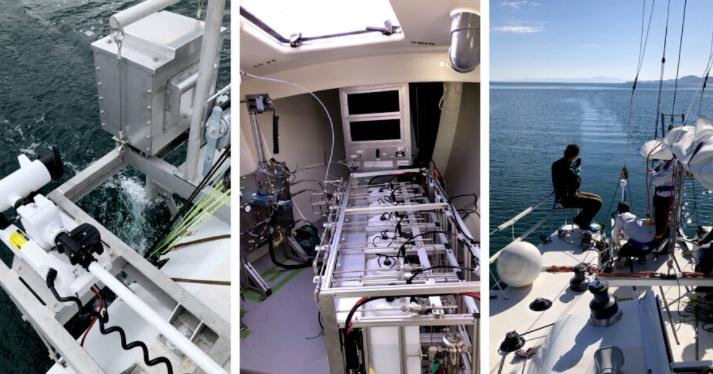MOL successfully demonstrated how wind and hydrogen fuel cells can be combined to provide propulsion and generate onboard power using the yacht “WINZ MARU”.
To remind, MOL together with Ouchi Ocean Consultant, Inc., the National Maritime Research Institute (NMRI) of National Institute of Maritime, Port and Aviation Technology (MPAT), Smert Design, Graduate School of Frontier Sciences of The University of Tokyo, West Japan Fluid Engineering Laboratory, ClassNK, and Mirai Ene Planning LLC, have been promoting zero emission business utilizing wind power and hydrogen “Wind Hunter Project” since last November.
As informed, the project has now conducted a demonstration experiment onboard “WINZ MARU” yacht in Sasebo-city, Nagasaki in Japan.
During strong wind, the yacht uses wind power to generate electricity using a underwater turbine to produce and store hydrogen onboard. Amid weak wind, the stored hydrogen is used at hydrogen fuel cells to generate electricity to rotate a propeller.
What is more, five experimental sailings have been conducted as of November 24 2021 and series of cycles has been successfully demonstrated: (1) power generation by ocean wind → (2) hydrogen production → (3) hydrogen storage → (4) fuel cell power generation → (5) propulsion by electric propeller.
At forthcoming full-scale sailing, we will accumulate and analyze navigation data in order to verify the actual performance characteristics of various equipment and the efficiency of the yacht (plant) itself and we aim to complete the demonstration experiment by March 2022. As a future roadmap, we aim to create a larger scale, about 60 meters long vessel, by 2024. Furthermore, we plan to develop and build much larger scale zero-emission vessel by 2030.
…MOL noted.






























































